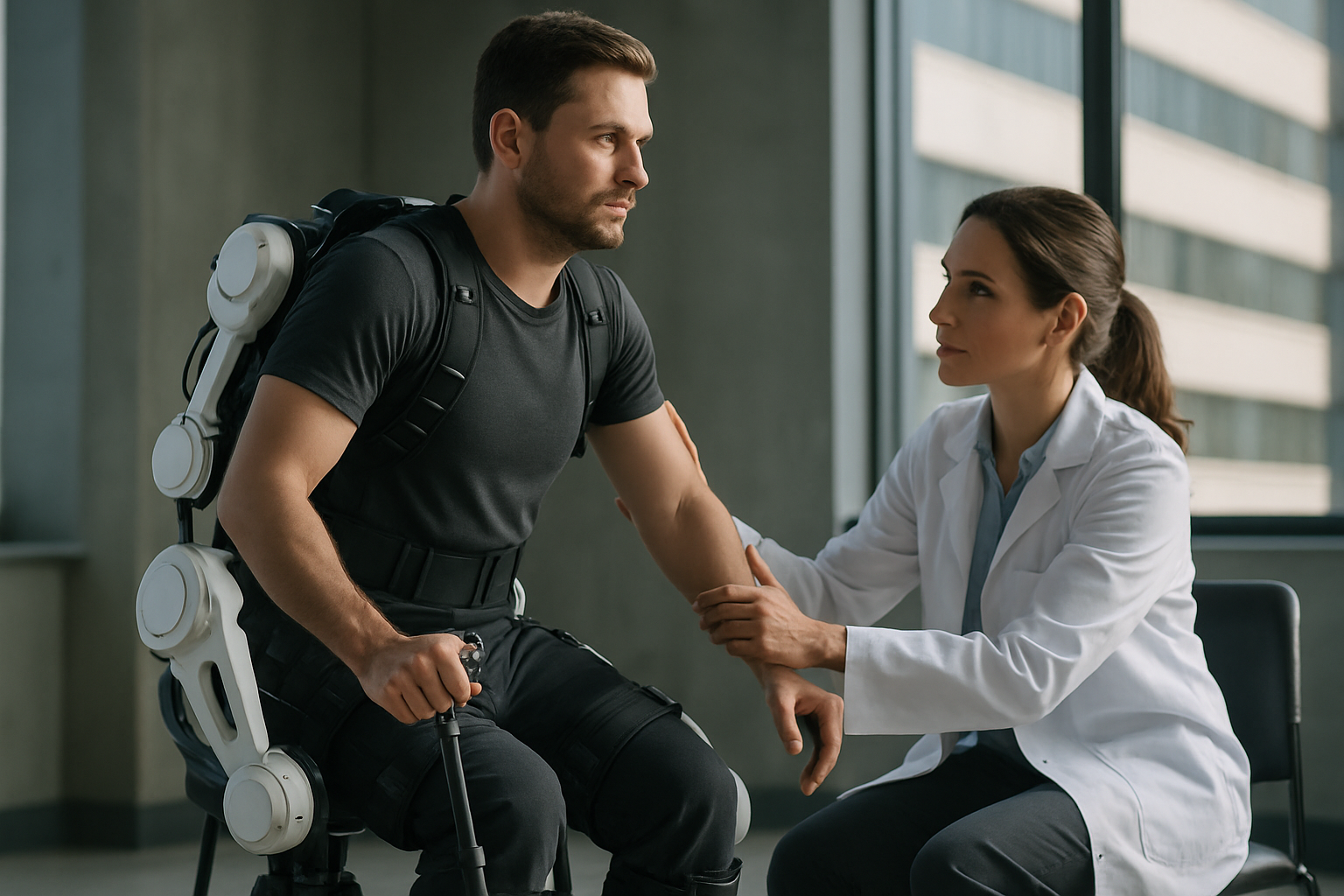Understanding How Emerging Therapies Are Evaluated
Discover the intricate process of evaluating emerging therapies and their potential impact on healthcare. This guide provides insights into the rigorous assessment methods used to determine the effectiveness and safety of novel treatments, shedding light on the future of patient care and medical advancements.

How Medical Advancements Shape Physical Therapy Practice
Medical advancements in physical therapy emerge from various sources, including technological innovations, research discoveries, and evolving understanding of human physiology. These developments often begin in research laboratories or clinical observation settings where practitioners notice patterns or develop new techniques. The integration of technology, such as virtual reality systems for balance training or robotic-assisted movement devices, represents a significant category of advancement. Additionally, new manual therapy techniques, exercise protocols, and treatment philosophies continuously emerge from ongoing research and clinical experience.
The translation of these advancements into clinical practice requires careful consideration of evidence quality, patient populations, and practical implementation factors. Professional organizations and regulatory bodies play crucial roles in establishing guidelines for adopting new treatments, ensuring that innovations complement existing evidence-based practices rather than replacing them without proper justification.
What Constitutes Emerging Therapies in Rehabilitation
Emerging therapies in physical therapy encompass a broad spectrum of interventions that are relatively new to clinical practice or are being applied in novel ways. These may include innovative exercise techniques, advanced manual therapy approaches, cutting-edge equipment applications, or integrated treatment protocols that combine multiple therapeutic modalities. Examples include dry needling techniques, blood flow restriction training, neuromuscular electrical stimulation applications, and telehealth-delivered rehabilitation programs.
The classification of a therapy as “emerging” depends on factors such as the availability of supporting research, the duration of clinical use, and the extent of adoption within the professional community. Some therapies may remain in the emerging category for extended periods while evidence accumulates, while others may quickly transition to established practice based on robust initial research and positive clinical outcomes.
Healthcare Evaluation Standards and Protocols
Healthcare evaluation of emerging therapies follows established protocols that prioritize patient safety and treatment efficacy. The evaluation process typically begins with preclinical research, including laboratory studies and small-scale pilot programs. This initial phase helps identify potential benefits, risks, and optimal application methods before broader clinical testing.
Clinical trials represent the gold standard for therapy evaluation, progressing through phases that gradually increase participant numbers and scope. Phase I trials focus on safety and dosage determination, Phase II trials examine efficacy in specific populations, and Phase III trials compare new treatments to existing standards of care. Throughout this process, institutional review boards and ethics committees provide oversight to protect participant welfare and ensure research integrity.
Systematic reviews and meta-analyses play essential roles in synthesizing evidence from multiple studies, providing comprehensive assessments of therapy effectiveness across different populations and settings. These analyses help identify patterns, limitations, and gaps in the research that inform future studies and clinical decision-making.
Novel Treatments Integration Process
The integration of novel treatments into standard physical therapy practice involves multiple stakeholders and systematic processes. Professional licensing boards, healthcare institutions, and insurance providers each contribute to determining when and how new therapies become available to patients. This integration process requires demonstration of clinical effectiveness, cost-effectiveness, and safety profiles that meet or exceed existing treatment options.
Training and certification requirements often accompany the introduction of novel treatments, ensuring that practitioners possess the necessary skills and knowledge to deliver interventions safely and effectively. Continuing education programs, specialized workshops, and certification courses help bridge the gap between research findings and clinical application.
Quality assurance measures, including outcome tracking and adverse event reporting systems, support the ongoing evaluation of novel treatments once they enter clinical practice. These monitoring systems help identify any unforeseen issues and provide real-world effectiveness data that complements controlled trial results.
Patient Care Considerations in Therapy Evaluation
Patient care remains the central focus throughout the evaluation of emerging therapies. The evaluation process must consider diverse patient populations, varying clinical presentations, and individual treatment goals. Factors such as age, comorbidities, functional status, and personal preferences influence both the appropriateness of specific therapies and the expected outcomes.
Informed consent processes ensure that patients understand the nature of emerging therapies, including potential benefits, risks, and alternatives. This transparency allows patients to make educated decisions about their care while participating in the advancement of clinical practice. Patient-reported outcome measures provide valuable insights into treatment effectiveness from the consumer perspective, complementing objective clinical assessments.
The evaluation process also considers equity and accessibility factors, ensuring that emerging therapies are evaluated across diverse populations and that beneficial treatments become available to all appropriate patient groups, regardless of socioeconomic status or geographic location.
Safety Monitoring and Ongoing Assessment
Continuous safety monitoring represents a fundamental component of emerging therapy evaluation that extends well beyond initial approval and implementation. Post-market surveillance systems track adverse events, unexpected outcomes, and long-term effects that may not have been apparent during initial trials. These monitoring systems rely on practitioner reporting, patient feedback, and systematic data collection to identify safety concerns.
Regular reassessment of emerging therapies occurs as new evidence becomes available and as clinical experience accumulates. This ongoing evaluation may lead to refinements in application techniques, modifications to patient selection criteria, or updates to safety protocols. Professional organizations periodically review and update practice guidelines to reflect current evidence and ensure that emerging therapies continue to meet safety and efficacy standards.
The collaborative nature of safety monitoring involves healthcare providers, regulatory agencies, researchers, and patients working together to maintain high standards of care while supporting continued innovation in physical therapy practice. This comprehensive approach helps ensure that emerging therapies contribute positively to patient outcomes while minimizing potential risks.
This article is for informational purposes only and should not be considered medical advice. Please consult a qualified healthcare professional for personalized guidance and treatment.




